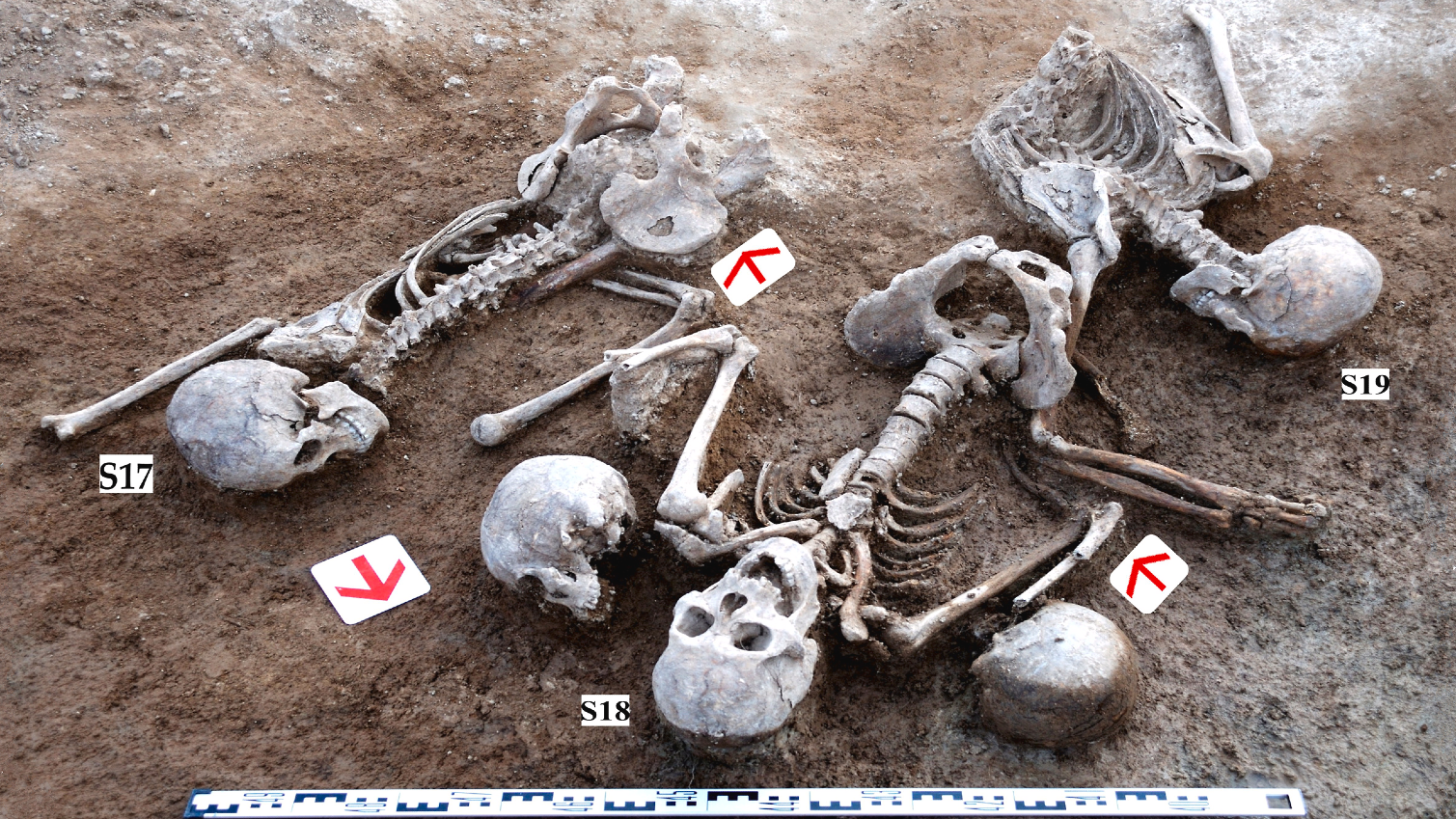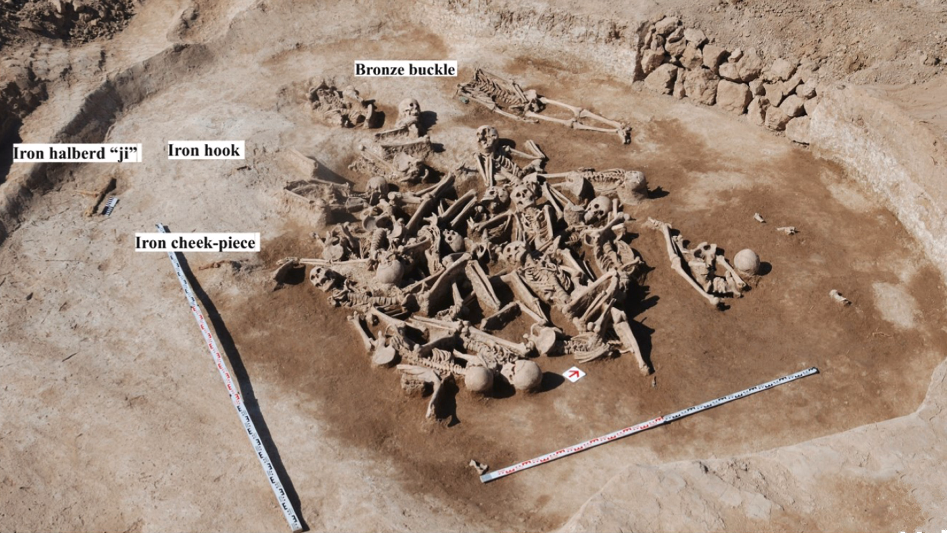This mass grave reveals a story of extreme violence and respect ⚔️
Follow us on Google News (click on ☆)
Researchers have analyzed a mass grave containing Han skeletons dating back to the 2nd century BC. These men, likely soldiers, were victims of mutilation and decapitation, signs of an infamous execution according to the beliefs of the time. Genetic and isotopic analyses have confirmed their geographical origin and ethnic affiliation.

Several Han soldier skeletons found in a mass grave in Mongolia.
Credit: Ma et al. / Journal of Archaeological Science / CC BY-NC 4.0
The wars between the Han Empire and the Xiongnu marked a tumultuous period in Chinese history. These conflicts, which spanned two centuries, saw the construction of fortifications, some of which were integrated into the Great Wall of China. The discovery of this mass grave offers a unique glimpse into the burial practices and rituals of the time.
DNA analysis has shown that the buried individuals were genetically close to current Han and northern Chinese populations. Strontium isotopes revealed that these men came from different regions, suggesting they were soldiers engaged in a battle against the Xiongnu.

Aerial view of the Bayanbulag archaeological site in Mongolia.
Credit: Ma et al. / Journal of Archaeological Science / CC BY-NC 4.0
Researchers noted that the bodies had been carefully buried, despite the mutilations. This practice reflects the Chinese beliefs of the time, which held that it was essential to preserve the integrity of the body to ensure well-being in the afterlife. However, some bodies could not be buried intact, as evidenced by the absence of a head for one of the deceased.
This study, published in the Journal of Archaeological Science, combines historical context, genetic and isotopic analyses to reconstruct the events that led to the death of these soldiers. It opens new perspectives on understanding the Han-Xiongnu wars and the burial practices of the time.
Researchers hope that further work will provide a better understanding of the burial customs of populations from this period. This discovery represents a significant advance in the study of ancient conflicts and the rituals associated with death.
What does isotopic analysis reveal about the origins of the individuals?
Isotopic analysis, particularly of strontium, allows for the determination of the geographical origin of individuals by studying the variations of this element in their bones. This method is based on the principle that strontium isotope ratios in the environment are absorbed by plants, then by animals and humans who consume them.
The results of this analysis show that the soldiers buried in the Bayanbulag mass grave came from different regions, indicating that they were likely soldiers recruited to fight the Xiongnu. This geographical diversity highlights the scale of the Han Empire's military mobilizations.
This technique is particularly useful in archaeology for tracing the movements of ancient populations and understanding the migratory and military dynamics of past civilizations.
How did Chinese beliefs influence burial practices?
Ancient Chinese beliefs placed great importance on the integrity of the body after death. According to these beliefs, a mutilated or incomplete body prevented the soul from being reborn or finding peace in the afterlife. This explains why the Han soldiers, although mutilated, were carefully buried, with an attempt to reconstruct their bodies.
This practice also reflects the respect of the living for the dead, seeking to offer them a dignified burial despite the circumstances of their death. Funeral rituals were thus a means of preserving the honor of the deceased and respecting spiritual traditions.
However, in the case of soldiers executed by the Xiongnu, some bodies could not be buried intact, highlighting the brutality of the conflicts and the war practices of the time.